Acoustic sensors enable efficient and non-invasive monitoring of a wide range of species, including many that are difficult to monitor in other ways. Although they were initially limited in application scope largely due to cost and hardware constraints, the development of low-cost, open-source models like the Audiomoth in recent years has increased access immensely and opened up new avenues of research. For example, some teams are using them to identify illicit human activities through the detection of associated sounds, like gunshots, vehicles, or chainsaws (e.g. OpenEars).
With this relatively novel dimension of wildlife monitoring rapidly advancing in both marine and terrestrial systems, it is crucial that we identify and share information about the utility and constraints of these sensors to inform efforts. A recent study identified advancements in hardware and machine learning applications, as well as early development of acoustic biodiversity indicators, as factors facilitating progress in the field. In terms of limitations, the authors highlight insufficient reference sound libraries, a lack of open-source audio processing tools, and a need for standardization of survey and analysis protocols. They also stress the importance of collaboration in moving forward, which is precisely what this group will aim to facilitate.
If you're new to acoustic monitoring and want to get up to speed on the basics, check out these beginner's resources and conversations from across the WILDLABS platform:
Three Resources for Beginners:
- Listening to Nature: The Emerging Field of Bioacoustics, Adam Welz
- Ecoacoustics and Biodiversity Monitoring, RSEC Journal
- Monitoring Ecosystems through Sound: The Present and Future of Passive Acoustics, Ella Browning and Rory Gibb
Three Forum Threads for Beginners:
- AudioMoth user guide | Tessa Rhinehart
- Audiomoth and Natterjack Monitoring (UK) | Stuart Newson
- Help with analysing bat recordings from Audiomoth | Carlos Abrahams
Three Tutorials for Beginners:
- "How do I perform automated recordings of bird assemblages?" | Carlos Abrahams, Tech Tutors
- "How do I scale up acoustic surveys with Audiomoths and automated processing?" | Tessa Rhinehart, Tech Tutors
- Acoustic Monitoring | David Watson, Ruby Lee, Andy Hill, and Dimitri Ponirakis, Virtual Meetups
Want to know more about acoustic monitoring and learn from experts in the WILDLABS community? Jump into the discussion in our Acoustic Monitoring group!
Header image: Carly Batist
June 2024
July 2024
event
September 2024
event
February 2023
event
event
January 2023
event
November 2022
event
42 Products
Recently updated products
| Description | Activity | Replies | Groups | Updated |
|---|---|---|---|---|
| A few more! |
|
Acoustics | 6 months 1 week ago | |
| Hi, thanks so much for getting back. You can reach me at [email protected] |
|
Acoustics | 6 months 2 weeks ago | |
| Interesting! Hi Sean, sounds like an excellent project. Definitely talk with the Arbimon folks! As @carlybatist said, I am working with birds in the Peruvian Amazon, but in... |
|
Acoustics | 6 months 3 weeks ago | |
| Hi everyone, I wanted to provide an update on behalf of Wildlife Acoustics regarding some of these comments in this thread. As some of you may know, we have just announced... |
+19
|
Acoustics, Sensors | 6 months 3 weeks ago | |
| I second that! |
|
Acoustics | 7 months 1 week ago | |
| I wish to share an update on my MSc thesis project, that contributes to the field of decoding animal communication. In my work I... |
|
Acoustics, Data management and processing tools, Early Career | 7 months 3 weeks ago | |
| Hi Wildlabbers!We were asked to share this opportunity to present at the upcoming Audiomoth conference:Presenters are urgently needed -... |
|
Acoustics | 8 months 1 week ago | |
| I've tested a Petterson ultrasonic microphone with a sample rate of 384khz and it works out of the box with this software as well. Would be cool to sound localize some bats. |
+22
|
Acoustics | 8 months 1 week ago | |
| Steve Simpson (on behalf of collaborator @MilesParsons) joined our June Variety Hour to give a report from the Wolrd Oceans Passive... |
|
Acoustics, Marine Conservation | 9 months 2 weeks ago | |
| Hi Tom, Seeed Studio also offers manufacturing services. Check out more info on the website here :) |
|
Acoustics | 9 months 4 weeks ago | |
| Another option for you could be Arbimon - it's free and does not require any coding/programming knowledge! |
|
Acoustics | 10 months 1 week ago | |
| Carly, that would be great! Thanks! I work with soundscapes and love the work of Rainforest Connection! I'll send you an email (@CUNY) to coordinate! |
|
Acoustics, AI for Conservation, Conservation Tech Training and Education, Drones, eDNA & Genomics, Emerging Tech, Remote Sensing & GIS | 10 months 4 weeks ago |
How do I scale up acoustic surveys with Audiomoths?
 Tessa Rhinehart
Tessa Rhinehart
25 June 2020 12:00am
How do I perform automated recordings of bird assemblages?
 Carlos Abrahams
Carlos Abrahams
19 June 2020 12:00am
Seeking feedback: draft principles for responsible use of conservation surveillance technology
9 June 2020 6:29pm
How do I train my first machine learning model?
 Daniel Situnayake
Daniel Situnayake
9 June 2020 12:00am
How are you using your Audiomoth?
14 September 2018 10:31am
26 November 2018 10:40am
As well as the points highlighted by Steph, Open Acoustic Devices are also running an online survey to capture the use of AudioMoth. To evaluate the global impact of open-source conservation technology, it is important to know how the technology is being used. This survey will go towards a human-computer interaction study into the usability of tech in conservation, and also used to evaluate the global impact of open-source conservation technology. AudioMoth is being used as a case study to identify best practises for open-source conservation technology development and accessibility.
It would be great to keep sharing your experiences on this thread and if you have time here with our online survey.
22 May 2020 7:32am
How do we get notified for the next group buy?
standards
21 May 2020 9:39pm
WILDLABS Tech Tutors: Season One
19 May 2020 12:00am
Audiograms- the range species can hear at
11 March 2020 11:50am
19 April 2020 8:07pm
I'm a primatologist so can't say too much about other mammal taxa, but I believe this is the most comprehensive resource for primate audiograms--
Coleman, M. N. (2009). What do primates hear? A meta-analysis of all known nonhuman primate behavioral audiograms. International Journal of Primatology, 30(1), 55-91.
7 May 2020 9:47am
Hi Isla,
Range at which animals hear sounds depend on 4 things:
1) the frequency (pitch) of the sound of interest. As a rule of thumb, lower frequency sounds travel farther since high frequency sounds are subject to more absorption transmission losses.
2) the medium in which the sound is being transmitted in (i.e. sound travels at ~1500m/s in seawater and ~340m/s in air).
3) the audiogram of the animal (i.e. what frequencies CAN they hear), which Carly is referring to in the previous comment.
There has been a lot of audiogram research on marine mammals. Find an overview and links to a handful of publications here: https://dosits.org/animals/effects-of-sound/measure-marine-mammals-reaction-to-sound/hearing-sensitivity-studies/ . This has also recently been explored in diving seabirds from SDU (university of southern denmark).
and
4) the noise levels in the environment, as sounds can only be distinguished if they have some decent signal-to-noise ratio.
If you have any specific more questions, get in touch.
Cheers,
Chloe
Any here used Cornell's Swift Recorder?
13 April 2020 4:33am
28 April 2020 4:51pm
Hi Daniella,
Yes, I have used SWIFT, SongMeter SM4, and Audiomoths. I find Swift to be the most energy efficient. They are also very affordable. Currently, they are my number one choice. In reality, however, I would say that whether you use Swift over other sensors, particularly Audiomoths, would depend on the type of study you want to do and how often you can get to the sensors to replace batteries. Happy to talk about cons and pros if you want. Just send me an email here: [email protected].
Cheers,
David
6 May 2020 8:13am
Hello Daniella,
We, WCS Mongolia, used lithium batteries for SWIFT recorders, the most of them still working in until now, since the last August.
At the Cornell SAW, they said alkanium battery will be working 27-44 days, and it depends on configuration sample rate.
We are configured 8K for sampling rate, and 24 hours recording.
Thanks,
Ochiroo
6 May 2020 8:22am
We used the following lithium batteries.
URL:
https://fortebattery.en.made-in-china.com/product/FBDEubqyfGhH/China-C-Size-Lithium-Batteries-Cr26500-Cr26500se-Er26500-Er26500m.html
Virtual Meetup Discussion: Acoustic Monitoring
10 March 2020 2:31pm
28 March 2020 8:24am
Hi all,
I missed this, but just watched the virtual meeting recording. Towards the end Stephanie mentioned there were many questions about recording multiple channels for localisation. I hadn't thought there was that much interest in it. Anyway my collaborator/client and I have been working on this off and on and slowly, but she did present some results she got at the recent conference in NZ. If there is any interest I'll see if I can get her to give out her slides or something.
On another tack I'm interested in the experience of anyone who has done gunshot/blast fishing localisation. In particular I'm curious about the algo used for detection and also for localisation. I'm taking the matched filter approach for detection but am now wondering if maybe CNN classification might be better.
Finally I'm interested if anyone has ideas about implementing a LoRa mesh, or knows of a useable mesh layer.
Thanks,
-harold
19 April 2020 8:09pm
Where would I be able to find the recording of this virtual meetup? Thanks!
20 April 2020 9:45am
Hi Carly,
The recording + our notes is here:
WILDLABS Virtual Meetup - Acoustic Monitoring
We also keep an archive of all past meetups here:
https://www.wildlabs.net/virtual-meetups
Steph
WILDLABS Community Call Recording: Rainforest X-PRIZE
30 March 2020 12:00am
Acoustic monitiring virtual meetup recording
27 March 2020 10:14am
Prior work on Bird Flock identification
22 March 2020 9:44am
23 March 2020 9:01pm
Hi Andrew,
Dan here—I'm one of the authors of the TinyML book! I love your Withymbe project; I've previously done work involving embedded systems and insects, and it's interesting to hear about your plans for bird flocks.
As long as you have sufficient data, you should be able to identify different bird sounds and discern them from background noise. The TinyML book has a chapter that introduces the underlying techniques, and I'd also recommend taking a look at www.edgeimpulse.com - we've built a set of tools designed to make it easy to train these types of models.
We actually recently published a tutorial on Wildlabs about this very concept:
https://www.wildlabs.net/resources/case-studies/tutorial-train-tinyml-model-can-recognize-sounds-using-only-23-kb-ram
I'm always excited to learn about new applications; feel free to reach out if there's any way we can help. I'm [email protected].
Warmly,
Dan
24 March 2020 3:49am
Just guessing but I don't think it will make much of a difference, individual or flock. The spectrogramme will look much the same, and I think that is used as the input vector to the CNN. If so then I would expect the model will be quite tolerant of flock size. Just spitballing here though.
24 March 2020 7:23am
Hi Harold!
Great to know you are in the domain. To be honest my analysis so far indicates that when conducting a DSP approach on the spectrum, smoothing via convolution becomes an issue? Basically, the raw spectrum is too jagged to match, so one convolves it to smooth it, but then one just gets a generic "noise"-shaped spectrum. I also have variances in sampled spectra from the same source recording? I am using an fs=44100 and a spectrum 0 - 64kHz initially, or though I tried to filter from 100 - 9k with little success?
My design outline is: I need to identify the presence of a flock of a certain species of avians, I need to know when the flock is not present, and I need to distinguish the presence of other flocks of birds, not to identify them, but they are sometimes similar in size and possibly, therefore, call range? A sort of "We - Not We" approach?
I am comparing the gestalt sound, not individual calls?
Plus: I am using a Rapsberry Pi for the Fog Node currently, but see that I can use my Arduino Uno for TinyML from the examples which use a Nano? I am interested in the power-saving, but need a robust microphone rig, which I currently get via usb?
I will checkout your tutorial, many thanks!
Tally ho!
Andrew.
Virtual Field Trip: Conservation Technology with Shah Selbe
 Shah Selbe
Shah Selbe
24 March 2020 12:00am
Enter the Zooniverse: Try Citizen Science for Yourself!
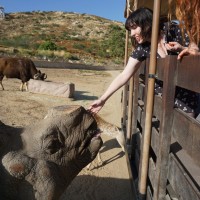 Ellie Warren
Ellie Warren
18 March 2020 12:00am
Tutorial: Train a TinyML Model That Can Recognize Sounds Using Only 23 kB of RAM
 Daniel Situnayake
Daniel Situnayake
16 March 2020 12:00am
Success recording bees using AudioMoth
7 July 2019 6:45pm
11 March 2020 11:16am
How can we learn more about your BEESWAX7 buzz identification and counting program, and discuss working together?
#Tech4Wildlife 2020 Photo Challenge In Review
4 March 2020 12:00am
Listening to Nature: The Emerging Field of Bioacoustics
 Adam Welz
Adam Welz
24 February 2020 12:00am
Workshop: Using Bioacoustics for Field Survey
 CIEEM
CIEEM
20 February 2020 12:00am
ICEI2020: 11th International Conference on Ecological Informatics
 ICEI 2020
ICEI 2020
14 February 2020 12:00am
WILDLABS Virtual Meetup Recording: Acoustic Monitoring
5 February 2020 12:00am
Acoustic Telemetry Workshop Series
 Ocean Tracking Network
Ocean Tracking Network
19 December 2019 12:00am
Machine-readable representation of a sensor duty cycle / recording schedule
11 September 2019 8:13pm
12 September 2019 5:27pm
Hi David,
I use cron-like patterns. One form looks something like: mon,wed-sun 0-23:0-59/10 90
which means every day but Tuesdays, every 10 minutes from the top of the hour, recording for 90 seconds. There is a similar form for matching by month/day. There could be yet another form for sunrise/sunset but I haven't implemented that. Basically a hyphen indicates a range, a comma indicates a list, and the slash is repetition step size. A full recording specification consists of one or more patterns, the first matching being used (for the recording duration). Years are not implemented but that could be done also.
Thanks,
-harold
Advice on Audiomoth extended power and case solution
3 September 2019 5:56pm
6 September 2019 11:21am
Hi Shawn,
I might be concerned about the Li-ion batteries, if there is any chance of losing a node (damage due to installation, weather, animals, or theft) then the economics won't work out, it being such a large proportion of the cost. Also it's kind of a pain flying with them even if they're quite light because they have to go in carry-on luggage.
I'm not insensitive to the e-waste issue, but here I think even here alkaline might have the upper hand: many lithium cells contain toxic cobalt (as opposed to manganese) and it's not often clear which type you have. Alkalines OTOH are relatively innocuous (unless they contain mercury, which they should not in this day and age): carbon anode, steel casing, zinc cathode, zinc oxide (used in baby nappy rash cream), lye, manganese oxide/dioxide (occurs naturally as an ore but you still don't want to eat it).
Thanks,
-harold
6 September 2019 5:29pm
Many thanks Harold!
I really appreciate the information on e-waste! What about going with LiFePo4 batteries? They are consider low toxicity and I know they are a type of battery that our chemistry department will take to recycle (they will also take lipo and li-ion). I am trying to figure out how to calculate battery life in the Audiomoth if I were to go with a higher voltage LiFePo4 but less mAh, say 6.6 volt and 2100/3000 mAh. Any suggestions? and of course thoughts on this option? These batteries are cheaper too ($11-15)!
I've worked a lot with lipo and li-ion batteries building drones and other power solutions so I'm not really worried about damaging them or transporting them. It's amazing how many huge lipo's I've had in my carry-on luggage and all they care about is my laptop! My main concern with alkaline is that they are expensive in Ecuador with no where to dispose of for recyling (yet or that I currently know of). Rechargeables make sense because of the long-life and they can be muled back to the university for recyling with the chemistry department (I have no idea what they do with them, they just want them and say they will be recycled).
Shawn
7 September 2019 12:33am
Hi Shawn,
I've only heard good things about LiFePO4. The only issue I can think of is exactly the one you bring up: the EMF is low enough that a 2S battery is needed. The Audiomoth uses a linear voltage regulator, so anything in excess of the 3.3V that is actually used is wasted. This means for endurance calculations you consider only the mAH rating given you have chosen a battery that will output at least 3.3V (plus a bit more for the dropout). So 2100mAH at 6.6V is just 2100mAH, compared with 5000mAH of your initial Li-ion.
A high-effiency switching regulator may make sense if you're running the Audiomoth at high duty, but even so finding a low power unit is hard. But since reliability is paramount, I would go with something with the fewest moving parts.
Thanks,
-harold
Audio analysis of flocks or swarms
1 July 2019 3:57pm
9 July 2019 1:00am
Hi Andrew,
I'm not a signals guy I'm afraid, but I was thinking perhaps one way might be to estimate the physical size of the flock/swarm by scanning with a microphone array.
BTW do you find it a problem if an individual happens to be too close and drowns out the rest? In part it's a question of dynamic range but also of sensor placement.
Thanks,
-harold
21 August 2019 3:38pm
So far we have been able to disambiguate between the flocks of two different species of small birds? Not easy. Our problem seems to be based around the fact that some or all flocks of small birds cheeping sound pretty similar? Of course the issue is: at what point is asynchronous sound aggregation just noise?
With regards to individual sounds, we are not interested in individuals at the moment so have not tested for it. I suspect however that in the interests of completeness we will be?
More anon,
Andrew.
Raspberry Pi Hardware Mono Mic Problem
4 June 2019 3:47pm
24 July 2019 5:26pm
We've had good results with two mono inputs accepted via the stereo 1/4" input jack on the Pisound HAT on a 3B+ and just about to test with the 4. Details and links to Pisound folks in Lithuania here -- http://www.orcasound.net/2018/04/27/orcasounds-new-live-audio-solution-from-hydrophone-to-headphone-with-a-raspberry-pi-computer-and-hls-dash-streaming-software/
26 July 2019 9:50pm
Hey Scott,
Thanks for the advice, it is greatly appreciated. That's a very interesting project as well! I will have a read through it all in detail.
Sam
21 August 2019 3:22pm
Hi Sam,
have you tried the Clippy EM172 ? I was looking at this microphone on Raspberry Pi + PiSound, but it has an electret capsule and should then be powered...
Thank you !
Sound Event Recognition - through collaboration
28 June 2017 9:13pm
10 April 2018 2:19pm
no, you didn't miss it. We don't share it with the general public. Only with serious partners ;-)
9 July 2019 9:42pm
@jankees,
Hi I am working on a system to reduce Human Elephant Conflict and am interested in acoustics of Elephants and the identification of elephants through their acoustic signature to assist with this project, did you get anywhere with the serval sensor for detecting Elephants?
We are a non profit called the Forgotten Parks Foundation and currently managing the Upemba and Kundelungu National Parks in the DR.Congo and have an immediate requirement to reduce HEC so we would like to assist with the development of such a system.
10 July 2019 7:15am
Hi Kev,
thank you for contacting us. We are a non-profit, too. I very much welcome collabortion on this system. Shall we continue our discussion through email? Mine is [email protected].
Looking forward to discussing this further,
Jan Kees
Technology lab focused on wildlife protection opens on Ol Pejeta Conservancy
 Ol Pejeta Conservancy
Ol Pejeta Conservancy
31 May 2019 12:00am
WILDLABS TECH HUB Showcase
17 May 2019 12:00am




























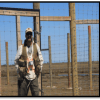

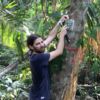


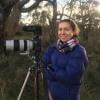





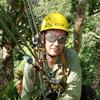




25 September 2018 8:08pm
I'm in North Somerset UK and have two AudioMoths. I've adapted some waterproof cases which also can be locked and strapped onto a tree etc using a python cable. This allow me to use them safely in semi-public spaces. My interst is surveying for bats and recording them with the land owners. I got interested in having a recorder, when helping to trap for nathusius' pipistrelle on a site I've know for 10 years - and just because I was out later than I normally survey we found not only nathusius' pipistrelle but a passing Lesser Horseshoe on my Petterson M500usb - so I decided to get some AudioMoths and play!
My Website is here